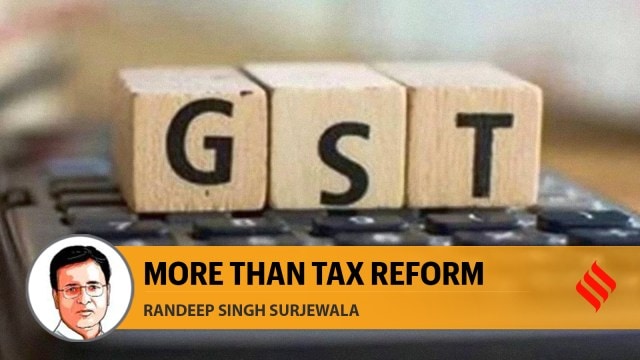
In 2017, when GST was introduced, it was celebrated as a triumph of cooperative federalism between the Centre and the states. The states surrendered substantial fiscal powers and autonomy, reassured by a compensation mechanism and the promise of equal partnership. Article 246A, introduced by the 101st Constitutional Amendment 2016, sought to give both Parliament and state legislatures concurrent authority over GST and was seen as a constitutional innovation meant to preserve fiscal federalism.
Yet the promise of “One Nation, One Tax” was betrayed by seven confusing GST tax slabs. And any goodwill that existed between the Centre and states has been squandered by a ruling regime that has demonstrated a clear and consistent prioritisation of its own interests — fiscal and political — over those of the states. States are up in arms against an attack on fiscal federalism that threatens to relegate the states of the Union into glorified municipal committees.
This is a challenge that the Modi government seeks to brush under the carpet. It must answer the questions of how it will compensate the states for the tax revenue losses suffered by them after implementation of GST 2.0. Consider the specifics. The Union finance ministry claims conservatively that the current GST rationalisation will shave only Rs 40,000 crore off revenues. But others have a far bigger estimate — the State Bank of India estimates losses of around Rs 80,000 crore and HSBC Rs 1.4 lakh crore. The states themselves warn of damages upwards of Rs 2.5 lakh crore.
The government must first answer as to how it plans to use the annual cess amount of Rs 1.8 lakh crore and what the long-term plan is for sharing it with the states. This is the only guarantee of compensation to states that will ensure their fiscal independence and allay the fear of being reduced to municipalities of the Centre. Let us not forget, the financial independence of the states is intrinsic to the survival of democracy and the basic structure.
Since GST accounts for a large chunk of states’ own tax revenues, the hit is direct: A 15-20 per cent decline, roughly 0.5 per cent of their GSDP. That is money that funds classrooms in Maharashtra, health centres in Haryana, and welfare schemes in states like Karnataka and Telangana. Telling states that “buoyancy” will make up the foreseen shortfall is like asking them to walk the edge of fiscal ruin without a safety net.
To this end, the Government of India cannot usurp the large pool collected under various “cesses” and amounting to Rs 1.8 lakh crore annually. The levies on sin and luxury goods make up about 7–8 per cent of all GST collections. These cesses were created to compensate states. But now, the Centre looks to cut rates sharply from 88 per cent to 40 per cent effectively. The “trick” being to keep cesses outside the divisible pool and retain them for the Centre. The states, already squeezed, lose both GST and cess revenues. This is not simplification; it is a betrayal of cooperative federalism.
In October 2024, the Modi government had given a plan to share cess proceeds equally with the states. Today, the promise has evaporated with the Centre now wanting to keep the cess proceeds for itself. If such centralisation continues, states risk being reduced to vassal states. Karnataka, Kerala, Tamil Nadu, Telangana, Himachal Pradesh, Punjab, Jharkhand, and West Bengal are now coming together to form a united front to address this issue if the central government will not.
Here, it is important to recall the promise of Article 246A. It was introduced to prevent this exact imbalance and gave both Parliament and state legislatures power to make GST laws, reserving exclusivity for Parliament only in inter-state trade through IGST. The apex court in Mohit Minerals vs Union of India (2022) underscored this design, holding that GST Council recommendations are not binding and that states retain legislative autonomy. Cooperative federalism, the Court said, must be “collaborative, not coercive”.
The recklessness is magnified by global pressures. With US tariffs hitting Indian exports, states with export-intensive economies like Maharashtra’s textiles, Gujarat’s chemicals and jewellery, Karnataka’s IT and aerospace industries and Tamil Nadu’s auto parts are already looking at stunted growth and jobs. Weakening their domestic revenues at such a moment is a folly.
States are not opposing GST rationalisation. Their counter-offer is pragmatic: (i) Impose a levy on sin goods in addition to the ad valorem taxes to keep the effective burden intact, with the collection flowing to states, (ii) guarantee existing GST revenue protection for a further period of five years, (iii) fix the fiscal year 2024–25 as the base, grossing up cess collections, and calculate on a rolling three year average as supported by earlier GST Council precedents, (iv) finally permit states to borrow against future revenues to cover deficits, as was done successfully before. These demands are guardrails against fiscal collapse in a time of financial uncertainty.
Finally, this is not merely a fight over tax slabs or revenues. It is a fight over India’s federal democracy and to protect fiscal federalism. If states are systematically starved of revenues, they risk being entirely dependent on the Centre’s whims and fancies. Ironically this weakening of state autonomy ultimately weakens the Centre itself — a fact the regime refuses to learn.
If rationalisation is not undertaken in earnest, with the cess being made part of the divisible pool, then this simplification of rates will not be remembered as reform. It will be remembered as a betrayal of the states.
The writer is Member of Parliament, Rajya Sabha and an advocate